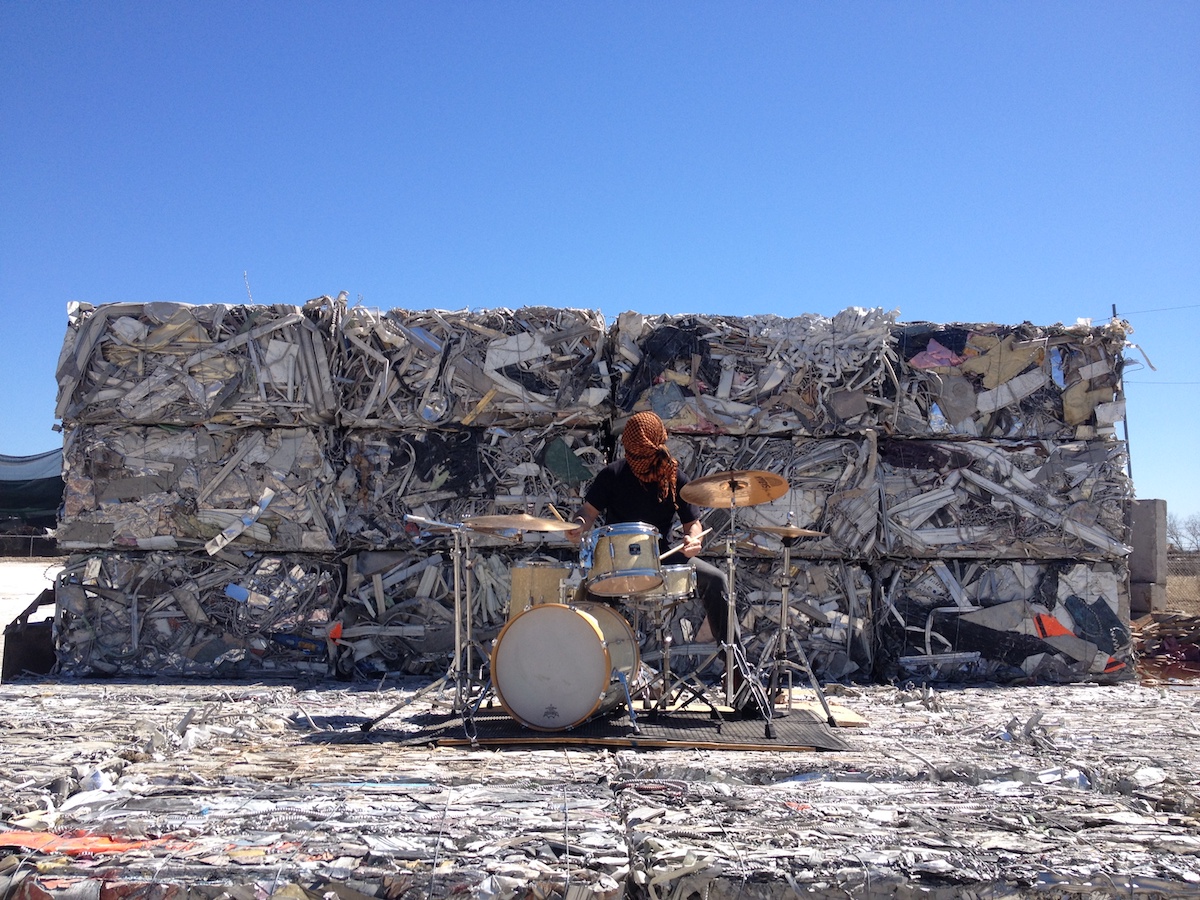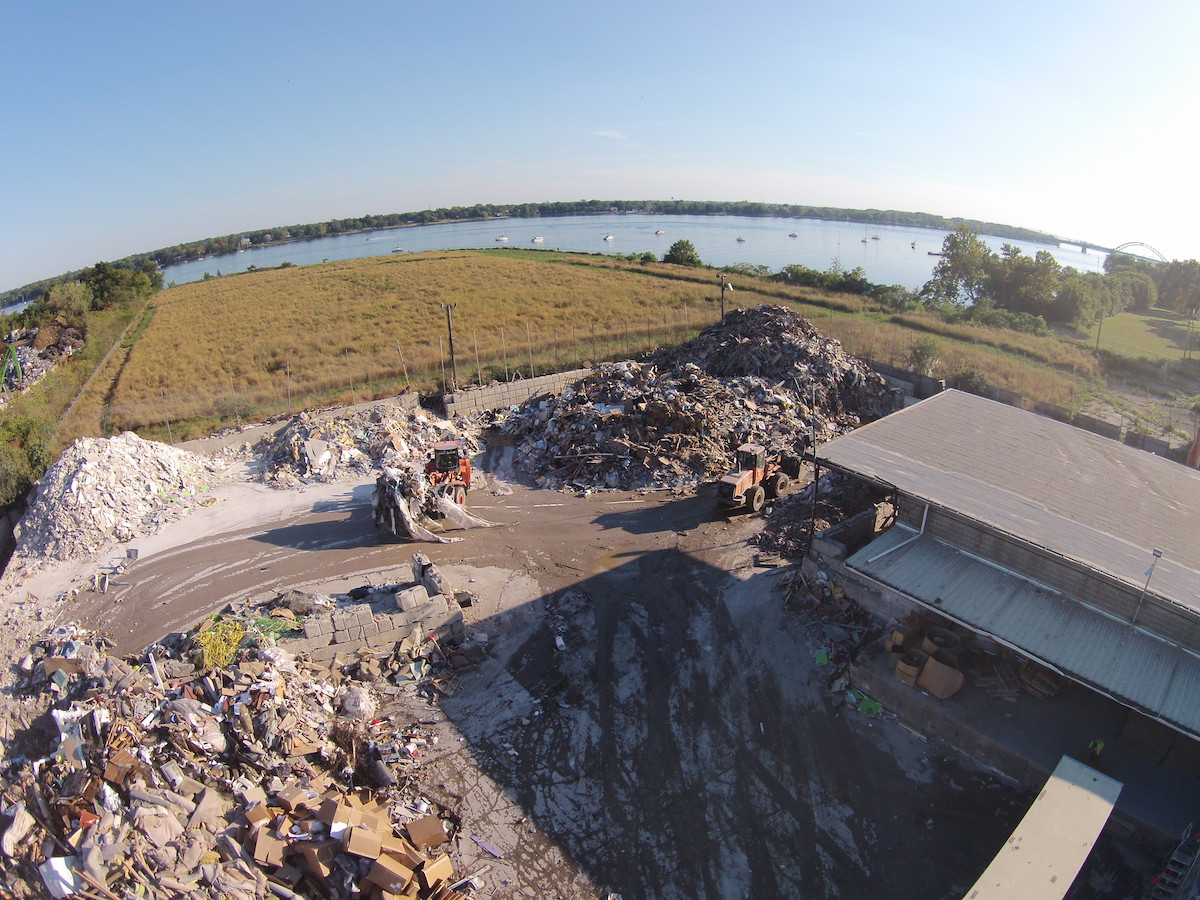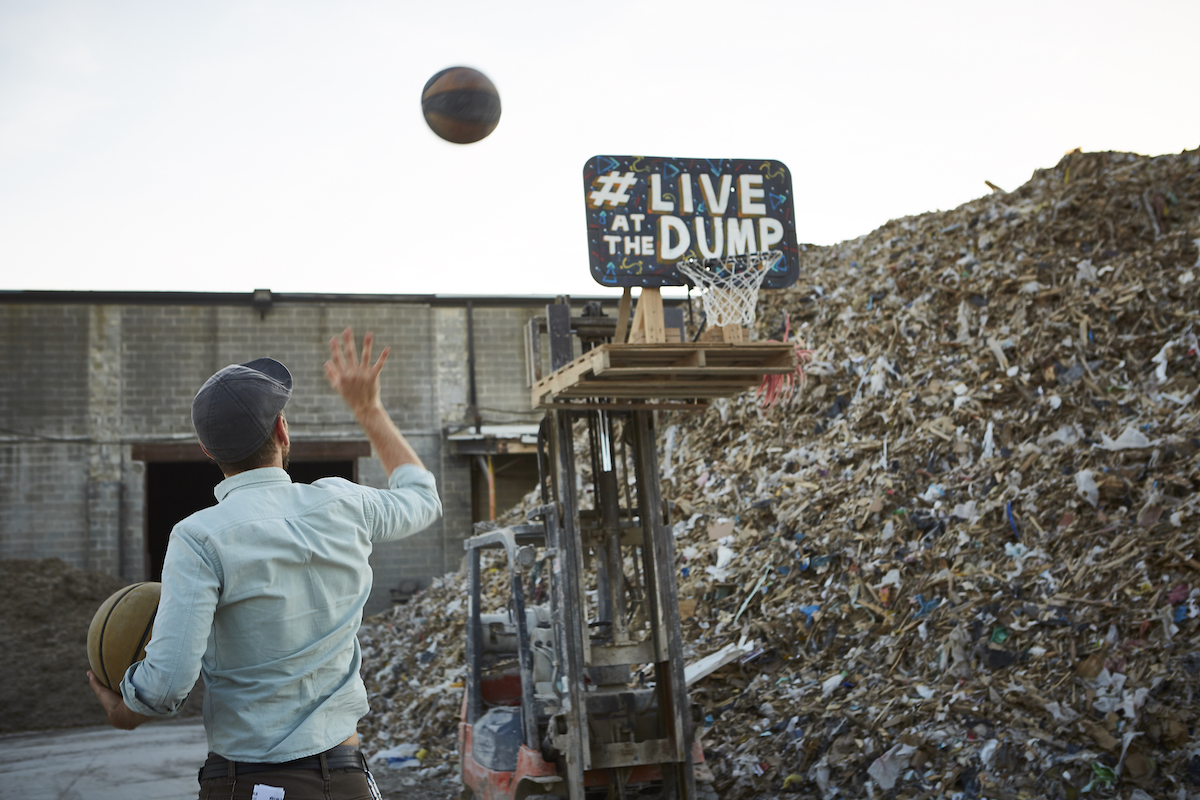Deep Focus
Recycled Brilliance: Philadelphia’s RAIR
“People come here, and their minds get melted, and then they make really rad shit,” says Billy Dufala about the artists in the Recycled Artist in Residency (RAIR), the treasured Philadelphia nonprofit that builds awareness about sustainability through art and design.
Dufala cofounded the organization with Fern Gookin in 2010. Gookin conceived of the project for her graduate thesis at Philadelphia University; sustainability was at the heart of Dufala’s practice. “I was poor and I lived in Philly,” he explained in a telephone interview. Dufala was accustomed to jumping into dumpsters to source materials with his brother, Steven (they make up the successful art duo, The Dufala Brothers), and the remnants of industry and disuse are central to their work.
Gookin and Dufala were also inspired by Philadelphia, a city with seemingly endless construction projects and, importantly, available space. Following programs like San Francisco’s Recology, they started working to create access to industrial materials for artists. “There is a charged history that comes with sourcing these materials,” Dufala says. “It is directly connected to the network of people who have access to buildings and sites, and, for them, artists are often a liability.”

Ana Peñalba, (Re)Production, 30th Street Train Station, RAIR, October 22, 2016. Photo by Ana Peñalba.
The RAIR project took off because of the relationships Billy and Fern built with relevant business owners, many of whom were born and raised in Philly. A sense of local pride enabled trust and facilitated partnerships. Dufala explained, “Philly’s not New York. It’s not as fast and furious and cutthroat. The likelihood of business owners actually cooperating is higher. They see it as an educational tool.” Indeed, this sense of community was crucial both for the conception of the project and its full implementation.
They ended up partnering with Avi Golen, owner of Revolution Recovery, a demolition and waste-recycling company that had been informally providing materials to artists for years. With access to more than two hundred fifty tons of materials every day—from insulation and scrap metal to plastic sheeting and scavenged wood—RAIR began as a more ideologically guided than economically driven experiment focused on creating opportunities for others.
Interested in exploring themes such as excess in infrastructure and the economics of trash, while leaving the residency open to individual practices, Gookin and Dufala invited artists worldwide to apply. In addition to having access to materials, resident artists can use onsite studio space and woodworking and metalworking facilities. Dufala serves as a mentor, operating the machinery and facilitating relationships between the artists and the center’s staff. “I’m kind of [the artists’] spirit guide,” he says.
The first artist-in-residence was Abigail DeVille. She created Hooverville Torqued Ellipse, a sculptural work inspired by Richard Serra’s 1998 Torqued Elipse VI. Monumental in scale, its materials included cardboard and orange plastic, stapled together to form a recycled, textured skin around its frame. The sculpture was displayed in Philadelphia at the Institute of Contemporary Art (ICA) as part of an installation organized by Marginal Utility, a local gallery, and was afterward disassembled and returned to the waste stream of materials.

Abigail DeVille’s Hooverville Torqued Ellipse installed at Institute of Contemporary Art, Philadelphia in 2012 by artist-run gallery Marginal Utility. Photo courtesy of RAIR.
The success of DeVille’s project sparked an increase in RAIR’s work. Since then, countless projects have been created with the sourced materials, and the RAIR team, now also including artist Lucia Thome, has begun leading workshops about the connection between waste and artmaking.
Highlights over the past seven years include Ana Peñalba’s recreations of iconic Philadelphia architecture using materials available at the center, including forklifts and trashcans. For the seminal ICA@50 exhibition in 2014, Dufala collaborated with the artist Mary Ellen Carroll. They used fourteen-hundred-pound bales of compressed metal to create an amphitheater where musicians were invited to perform “waste music” during an audience-less “Festival of Metal.” Documentation of the festival was shown in the exhibition, and two bales of metal were used as platforms for another performance and then returned to the waste stream after the show.

Waste Music: Festival of Metal organized by Mary Ellen Carroll and Billy Dufala for ICA@50 exhibition in 2014. Photo by Billy Dufala.
Recently, Martha McDonald, RAIR’s first performance-artist-in-residence, created an installation titled Songs of Memory and Forgetting. She sifted through materials to find remnants of people’s lives and created piles of photographs, teacups, and clothing that reflected the intersection of memory and materiality. As visitors moved through the installation, McDonald and Dufala performed original songs on found instruments, adding a layer of intimacy to these discarded objects. The project was part of “Live at the Dump,” a series of events supported by The Pew Center for Arts & Heritage for which the public was invited to the center for the first time. The site served not only as a place where art is made but also as a public gathering space in which to consider questions about art, industry, waste, and sustainability.
Throughout its years, RAIR has stayed true to its founding ethos and, in doing so, has deeply and positively affected how artists and organizations in Philadelphia operate. Dufala says, “The heart of the project is really an art and industry collaboration. The amount of trust is crazy.” RAIR is consistently striving to create something more than just art while keeping community, and Philadelphia, front and center.




